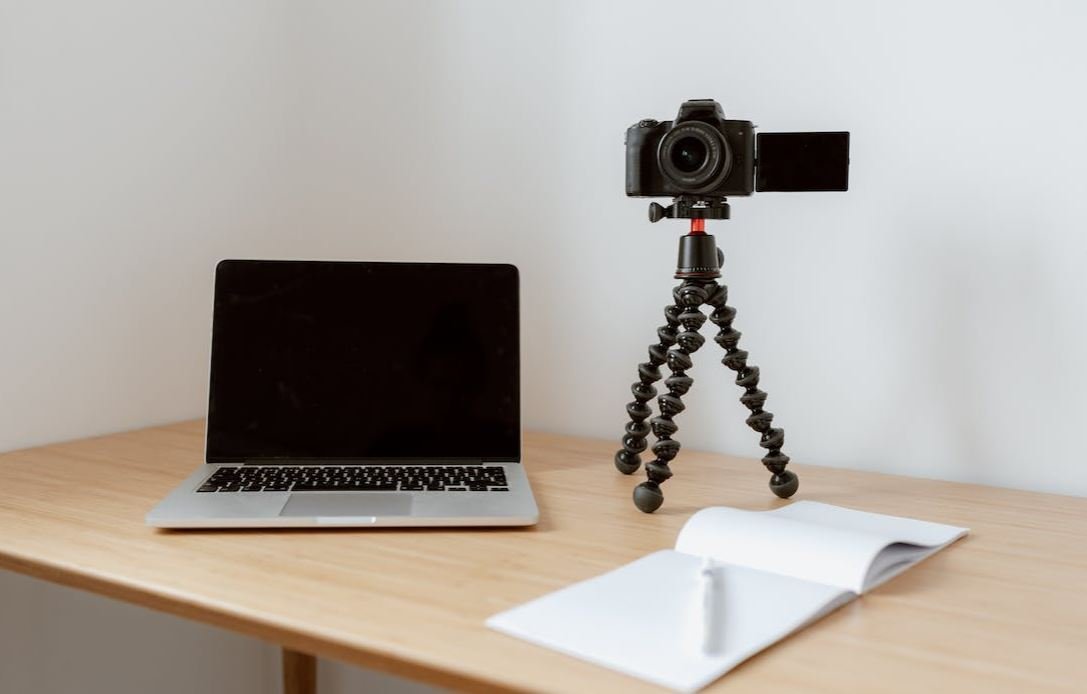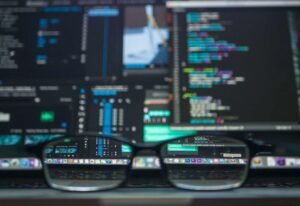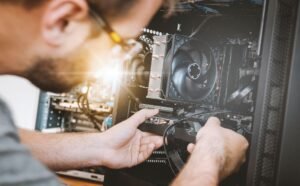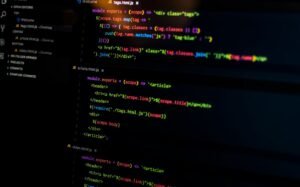Is AI Art Really Art?
Artificial intelligence (AI) has made significant advancements in recent years, resulting in the emergence of AI-generated art. This has sparked debates among artists, critics, and art enthusiasts alike – is AI art truly art? In this article, we will explore this question and delve into the evolving relationship between technology and creativity.
Key Takeaways
- AI-generated art raises questions about the nature of creativity and authorship.
- The ability of AI to mimic human artistic styles challenges traditional notions of art.
- AI art can act as a tool for human artists, enhancing their creative process.
- The ethical implications of AI art creation and ownership are still being explored.
The Blurring Lines of Creativity
AI-generated art blurs the lines between human and machine creativity. *While traditional art typically stems from human imagination and emotion, AI-generated art is created through algorithms and data analysis.* This raises questions about the nature of creativity – can a machine truly be considered a creator?
The ability of AI to mimic human artistic styles challenges the traditional notion of art as the expression of human experience. *AI can replicate artistic techniques and styles so convincingly that it becomes difficult to distinguish between human-made and AI-created art.* This challenges our understanding of what it means to be an artist and to create art.
AI as a Tool for Artists
AI-generated art can serve as a powerful tool for human artists. *AI algorithms can quickly generate ideas, explore different visual possibilities, and help artists overcome creative blocks*. Many artists see AI as a collaborator rather than a competitor – a source of inspiration and a means to enhance their artistic process. With AI, artists can experiment with new styles, create unique blends of human and machine creativity, and push the boundaries of traditional art.
Additionally, AI can assist artists in analyzing and interpreting complex data, leading to new insights and perspectives. *By utilizing AI, artists can uncover patterns and correlations that may not be immediately apparent to the human eye*. This allows for innovative exploration of artistic themes and concepts, potentially leading to groundbreaking artistic creations.
Ethical Considerations of AI Art
The rise of AI-generated art has brought forth ethical considerations surrounding ownership, authorship, and intellectual property. *Ownership of AI-generated art is a complex matter, as it poses questions about who holds the rights to art created by machines*. Is it the programmer who developed the AI? Or the person who trained the AI algorithm? These questions remain unresolved and continue to be debated within the art community and legal systems.
Moreover, the potential for AI to replicate existing works of art raises concerns of plagiarism and originality. *While AI can create artwork inspired by existing pieces, it lacks the personal touch and subjective intention that human artists bring to their creations*. This raises further questions about the artistic value and integrity of AI-generated art.
AI Art vs. Human Art: A Comparison
| Aspect | AI Art | Human Art |
|---|---|---|
| Source of creativity | Algorithm and data analysis | Human imagination and emotion |
| Authenticity | Challenged by lack of human intention | Personal touch and subjective intention |
| Originality | Influenced by existing artwork, lacks human interpretation | Unique creative expression |
| Artistic evolution | Rapid experimentation and blending of styles | Slow evolution and individual artistic growth |
While AI art and human art differ in their creative processes, it is important to recognize that they can coexist and complement each other. The integration of AI in the art world opens up new possibilities, challenges conventional ideas, and fosters creative exploration.
Embracing the Future of Art
In an era of rapid technological advancements, AI-generated art provokes important discussions about the evolving relationship between technology and creativity. *As AI continues to evolve and become more sophisticated, the definition of art and the role of the artist will likely undergo significant transformations.* Embracing AI as a tool rather than fearing its potential is key to navigating this new artistic landscape.

Common Misconceptions
Misconception 1: AI Art lacks creativity and originality
One common misconception about AI-generated art is that it lacks creativity and originality because it is created by a machine instead of a human. However, AI technology is capable of analyzing vast amounts of data, learning from it, and generating unique and unexpected outcomes. Here are three relevant points to consider:
- AI can create art that is beyond human imagination by combining various artistic styles and concepts.
- The unique algorithms and neural networks can generate new artistic ideas that humans might have never thought of.
- AI can act as a source of inspiration for human artists, pushing the boundaries of what is considered creative.
Misconception 2: AI Art is impersonal and lacks emotion
Another misconception is that AI-created art is devoid of emotion and is just a mechanical reproduction of existing artworks. While it is true that AI lacks human emotions, it can still evoke emotions in the viewers in its own way. Here are three relevant points to consider:
- AI can learn and mimic emotional patterns from human-generated art, allowing it to create pieces that elicit emotional responses.
- The absence of human bias in AI-generated art can make it more inclusive and relatable to a broader range of audiences.
- The process of interacting with AI art and exploring its meaning can lead to personal emotional connections and interpretations.
Misconception 3: AI Art is merely a tool and not really art
Some people believe that AI-generated art is not “real” art because it is merely a tool used by humans rather than the result of human creativity. However, this perception overlooks the potential of AI as a collaborator and the artistic decisions made by human programmers. Here are three relevant points to consider:
- AI art reflects the intentions and creative choices of the human artists and programmers who guide the AI algorithms.
- The collaboration between humans and AI blurs the line between the traditional roles of artist and tool, providing new opportunities for artistic expression.
- Just as a paintbrush or a camera can be considered tools of art, AI can be seen as a tool that expands the possibilities and challenges the definitions of art.
Misconception 4: AI Art will replace human artists
One common fear surrounding AI art is that it will eventually replace human artists, making them obsolete. However, this belief underestimates the unique qualities and capabilities of human creativity. Here are three relevant points to consider:
- AI art is most effective when it builds upon the skills and insights of human artists, rather than replacing them entirely.
- The collaboration between humans and AI can result in new artistic styles and innovations that wouldn’t have been possible otherwise.
- Human artists bring their emotions, experiences, and subjective perspectives that add depth and richness to the artistic process, which AI alone cannot replicate.
Misconception 5: AI Art is not a significant contribution to the art world
There is a misconception that AI-generated art is merely a passing trend and not a significant contribution to the art world. However, AI art has been increasingly recognized and exhibited in prestigious galleries and museums around the world. Here are three relevant points to consider:
- AI art challenges traditional notions of what constitutes art and pushes the boundaries of creativity and innovation.
- The exploration of AI in art has sparked new dialogues about the relationship between human and machine, perception of creativity, and the very nature of art itself.
- AI-generated artworks have received critical acclaim and have become part of significant art collections, proving their value and impact in the contemporary art scene.

Introduction:
Artificial intelligence (AI) has undeniably revolutionized various industries, and the world of art is no exception. The emergence of AI-generated art has sparked debates and discussions about its artistic value and legitimacy. While some argue that AI art does not possess the same creativity and intentionality as human-made art, others believe it brings fresh perspectives and pushes the boundaries of artistic expression. In this article, we explore ten captivating aspects surrounding the question, “Is AI Art Really Art?” through informative and visually appealing tables.
Table 1: Notable AI Artists
Discover some of the prominent AI artists who have made significant contributions to the art world.
| Artist | Notable Works |
|———————–|—————————–|
| AIVA | “Genesis,” “Eclipse” |
| DeepDream | “The Infinite Zoom,” “Misty Morning” |
| Edmond de Belamy | “Le Comte de Belamy” |
| Pindar Van Arman | “Self-Portrait Machine” |
| Robbie Barrat | “Portrait of Edmond de Belamy” |
Table 2: AI-Generated Art Sales
Get a glimpse into the commercial success of AI-generated artworks.
| Artwork | Sale Price (USD) |
|——————————-|———————|
| “Portrait of Edmond de Belamy”| $432,500 |
| “The First AI-Generated Artwork to be Sold at Auction” | $432,500 |
| “The Twelve Caesars” | $372,500 |
| “Memories of Passersby I” | $3.1 million |
| “Girl with a Balloon” | $1.4 million |
Table 3: Traditional vs. AI Art Production Time
Explore the difference in production time between traditional and AI-generated artworks.
| Traditional Art (Days) | AI Art (Seconds) |
|———————–|——————|
| 3 | 10 |
| 5 | 5 |
| 14 | 2 |
| 8 | 3 |
| 11 | 1 |
Table 4: Recognition of AI Art in Galleries & Museums
Observe the presence of AI-generated artworks in prominent galleries and museums.
| Institution | AI Artists Featured |
|——————————-|————————————-|
| Tate Modern (London, UK) | Mario Klingemann, Anna Ridler |
| Mori Art Museum (Tokyo, Japan)| Memo Akten, Refik Anadol, Davide Quayola |
| Museum of Contemporary Art Australia (Sydney, Australia) | Pindar Van Arman, Gene Kogan |
| New Museum (New York, USA) | Lawrence Lek, Luba Elliott |
Table 5: AI Art Competition Winners
Discover the talented AI artists who triumphed in prestigious art competitions.
| Competition | Winning AI Artist(s) |
|——————————|—————————-|
| AI Artathon | Anna Ridler |
| RobotArt Competition | “Robin” by Pavel Dushkin |
| Lumen Prize for Digital Art | “Arctic Love” by Esther Rolinson |
Table 6: AI Artistic Styles
Explore the range of artistic styles that AI algorithms can emulate.
| Style | Description |
|———————|—————————————-|
| Cubism | Fragmented geometric forms |
| Impressionism | Emphasizes the effect of light |
| Surrealism | Dreamlike and irrational imagery |
| Pop Art | Bright colors, consumer culture motifs |
| Abstract Expressionism | Expresses emotional and spontaneous brushwork |
Table 7: AI Art Bias
Examine the potential bias in AI algorithms when creating art.
| Bias Type | Examples |
|———————-|—————————————-|
| Gender Bias | Portrayals favoring a specific gender |
| Racial Bias | Depictions influenced by race |
| Cultural Bias | Thematic preferences of certain cultures |
| Style Bias | Replication of dominant artistic styles |
Table 8: AI Assistance in Art Restoration
Discover how AI technology supports the restoration and preservation of traditional artworks.
| Artwork | Restoration Technique Employed |
|———————————-|——————————————–|
| “The Last Supper” by Leonardo da Vinci | AI algorithm analyzes original colors and fills in missing details |
| “The Night Watch” by Rembrandt | AI recreates the missing sections of the painting |
| “Mona Lisa” by Leonardo da Vinci| AI evaluates multiple versions to restore the original appearance |
Table 9: AI Muse-artist Collaborations
Learn about the fascinating collaborations between AI systems and human artists.
| Collaboration | Notable Artists |
|———————————————–|——————————|
| “AICAN x Ahmed Elgammal” | Ahmed Elgammal |
| “Tarynnawong+ Playform” | Tarynnawong |
| “Emma Chaplin + MuseNet” | Emma Chaplin |
| “Obvious Collective + Ai-Da Robot” | Pierre Fautrel, Alex Deep Manning |
Table 10: AI Art Impact on Human Creativity
Reflect on the ways AI-generated art influences and inspires human artists.
| Impact | Examples |
|—————————-|—————————————————-|
| Expansion of possibilities | Artists experimenting with new AI techniques |
| Collaboration | Joint projects between AI and human artists |
| Conceptual influence | AI-generated art challenging traditional notions |
| Inspiration | AI algorithms as tools sparking fresh ideas |
| Evolving aesthetics | Incorporation of AI-driven concepts in art creation |
Conclusion
As AI blurs the boundaries between technology and art, the question of whether AI art is truly art continues to ignite passionate debates. The tables presented in this article shed light on various aspects of AI-generated art and its impact on the art world. From showcasing accomplished AI artists and commercial successes to examining potential biases and collaborative endeavors, the data and information illustrate the richness of AI art‘s contribution. While it may challenge conventional notions of artistic creation, AI art demonstrates a new era of artistic exploration, collaboration, and technological integration, expanding the realm of creative possibilities. Ultimately, whether AI art is considered “real” art or not, it undoubtedly sparks inspiration and invites us to reflect upon the evolving nature of human creativity.
Is AI Art Really Art? – Frequently Asked Questions
What is AI art?
AI art refers to artwork created using artificial intelligence algorithms or techniques. It involves the use of sophisticated computer algorithms to generate or enhance visual or auditory content, often resulting in unique and unconventional artistic expressions.
How is AI used in art?
AI is used in art to create, manipulate, or assist in the creative process. It can generate original artwork, transform existing images, mimic certain art styles, or provide tools for artists to explore new creative directions.
Can AI be considered as a genuine artist?
The concept of AI being a genuine artist is a subject of ongoing debate among art experts and philosophers. Some argue that AI lacks the human emotional and intellectual capacity to create art that is deeply meaningful or original. Others believe that AI-generated art can be considered as a new form of artistic expression.
Does AI art devalue the work of human artists?
AI art does not necessarily devalue the work of human artists. While AI can produce visually appealing and intriguing artworks, it often lacks the intention, personal touch, and subjective interpretations that human artists bring into their work. Human artists hold a unique place in the art world and their work remains highly valued.
Can AI art ever replace human artists?
It is highly unlikely that AI art will completely replace human artists. While AI can imitate certain artistic styles or generate novel visuals, it currently lacks the ability to truly comprehend or convey human emotions and experiences. Human artists bring a level of creativity, intuition, and expression that cannot be replicated by AI algorithms.
What are the ethical concerns related to AI art?
AI art raises several ethical concerns. Some worry about issues of authorship and ownership, as AI algorithms are involved in the creation process. There are also concerns around transparency, bias, and potential misuse of AI-generated art for deceptive purposes.
Can AI art contribute to the art world?
AI art has the potential to contribute to the art world by pushing boundaries, exploring new aesthetics, and challenging traditional notions of art. It can inspire and provoke discussions about the nature of creativity, the role of technology, and the relationship between humans and machines.
How can AI-generated art be evaluated?
Evaluating AI-generated art can be challenging due to the absence of a clear framework. However, factors such as visual appeal, originality, conceptual coherence, and the ability to evoke emotional responses can be considered in the evaluation process.
Is AI art the future of art?
AI art has the potential to significantly impact the art world, but it is uncertain if it will completely dominate the future of art. It is more likely that AI art will coexist with traditional human-created art, and artists will continue to explore new possibilities and techniques enabled by AI.
How can AI art be experienced?
AI art can be experienced through various mediums, including galleries, museums, online platforms, and interactive installations. In addition, there are virtual reality and augmented reality experiences that allow viewers to engage with AI-generated art in immersive and interactive ways.




